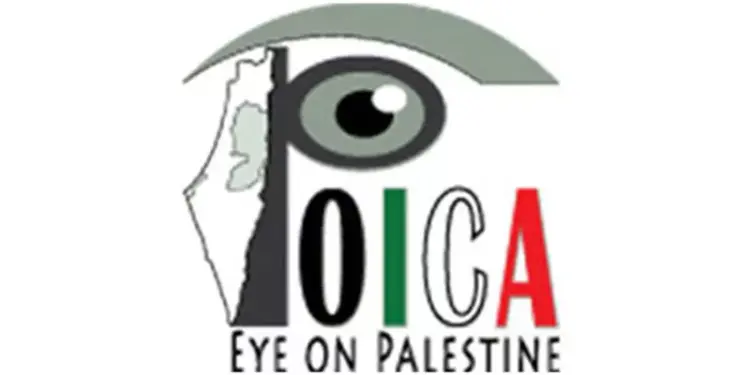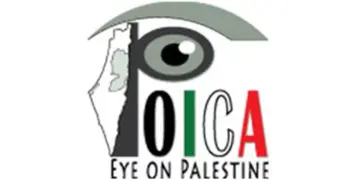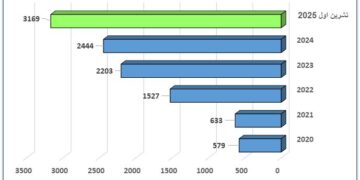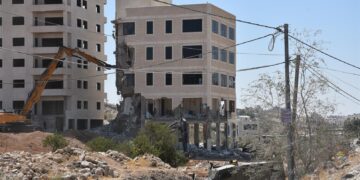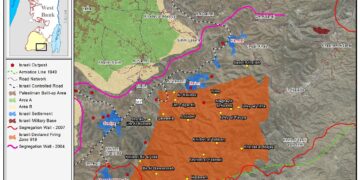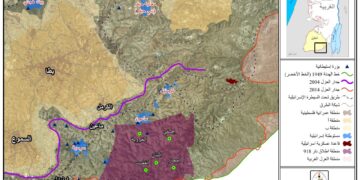Introduction
On July 9, 2004, the International Court of Justice (ICJ), the principal judicial organ of the United Nations, issued a landmark advisory opinion declaring Israel’s construction of a segregation wall in the Occupied Palestinian Territory (OPT), including East Jerusalem, contrary to international law. The Court found that where the wall deviates from the 1949 Armistice Line (the “Green Line”), it violates multiple provisions of international humanitarian and human rights law, and it called for the wall ’s dismantlement and for reparations to those harmed.
Yet, twenty‑one years later, that ruling remains unimplemented. Rather than dismantling the wall, Israel has expanded and entrenched it; using its route to annex additional Palestinian land, fragment communities, and codify segregation. The wall has evolved into both a physical obstacle and a powerful symbol of a broader system of control akin to apartheid, while the ICJ’s opinion has been relegated to a historical footnote.
This paper explores the legal, political, and humanitarian implications of the ICJ’s 2004 advisory opinion and what has changed since its issuance. Drawing on updated statistics and geopolitical trends through 2025, it examines how the international community’s failure to enforce accountability has deepened the crisis in Palestine, facilitating de facto annexation, institutionalizing apartheid‑like policies, and eroding the rule of law on the global stage.
The ICJ Advisory Opinion: Key Findings and Significance
On July 9, 2004, the International Court of Justice delivered an advisory opinion; adopted by a 14–1 majority; on Israel’s segregation wall in the Occupied Palestinian Territory (OPT), including East Jerusalem. Although non‑binding, it carried considerable legal and moral authority, drawing on the Fourth Geneva Convention, international human rights law, and the principle prohibiting acquisition of territory by force. The key findings were:
- Illegality of Construction
- The wall violated Israel’s obligations under international humanitarian law (notably the Fourth Geneva Convention) and international human rights law (including the rights to freedom of movement, work, education, and an adequate standard of living).
- Its route; cutting deep into the West Bank, risked de facto annexation and breached the Palestinian people’s right to self‑determination.
- Immediate Remedies Required
- Israel must cease all construction, dismantle sections already built, and make full reparations to those affected.
- Obligations of Third Parties
- All States are bound not to recognize or assist in maintaining the wall’s illegal regime.
The United Nations General Assembly endorsed these conclusions in Resolution ES‑10/15, calling on Israel to comply. Yet, despite this broad international endorsement and the opinion’s reinforcement of binding legal norms, such as the inadmissibility of territorial acquisition by force and the applicability of human rights instruments in occupied territory, no effective enforcement measures were ever taken. Israel instead expanded and entrenched the wall, and global reactions remained largely rhetorical, with no political or economic sanctions to compel its dismantlement.
What Has Changed Since 2004?
Rather than heed the ICJ’s call for dismantlement, Israel dramatically expanded and entrenched the segregation wall, and used it to consolidate control over occupied territory.
- Expansion and Entrenchment of the Wall
- By 2024, over 85 percent of the wall’s 771 km route lay deep inside the West Bank rather than along the 1949 Armistice (“Green”) Line.
- Roughly, 12.4 percent of West Bank land; key water resources, fertile agricultural areas, and dozens of settlements; has been effectively annexed.
- Allover Palestinian communities have been isolated behind the wall, cutting them off from schools, medical facilities, workplaces, and places of worship.
- The so‑called “Seam Zone” (the strip between the wall and the Green Line) has become a closed military area requiring special permits for Palestinians to reach their own farmland and homes.
- Settlement Expansion Accelerated
- The wall’s configuration deliberately encloses major settlement blocs and integrates them into Israel.
- Between 2023 and mid-2025, plans advanced for over 40,000 new settlement units in areas contiguous with the wall.
- Accompanying infrastructure, roads, fences, and additional military zones, has further fragmented the occupied territory and cemented the wall’s role as the backbone of Israel’s annexation strategy.
- Legalization of Annexation
- The 2018 “Nation‑State Law” enshrined Jewish supremacy and declared the expansion of Jewish settlement a “national value,” embedding permanent occupation into Israel’s basic law.
- Between 2020 and 2024, successive governments and coalition partners pressed plans to formally annex areas behind the wall, turning what was once “temporary security infrastructure” into a de facto border.
The following table highlights key indicators of the wall’s progression from 2004 to 2025:
| Indicator | 2004 | 2025 |
| Ø Total Planned Length | 645 km | 771 km (final adjusted plan) |
| Ø Length Completed | 190 km (27%) | 500 km (65%) |
| Ø Route Inside West Bank | 85% | 85% |
| Ø Palestinian Land Isolated | (633 km2)-11.2%
of West Bank |
(705 km2)-12.4%
of West Bank |
| Ø Communities Affected | ±150 | ±200 |
| Ø Checkpoints and Gates | ±45 checkpoints | 140+ fixed checkpoints; 100+ gates |
| Ø Settlements Included | ±65 | 108+ (serving over 750k settlers) |
| Ø Total Cost | ±$1.2 billion | >$2.5 billion |
These figures demonstrate that, far from rolling back the wall in compliance with international law, Israel has entrenched it as a foundational element of its occupation, reshaping geography, fragmenting communities, and institutionalizing a system of control and annexation.
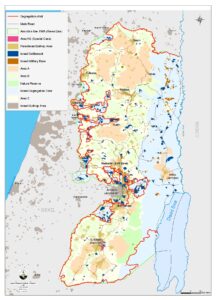 The Failure of the International Community
The Failure of the International Community
Despite the ICJ’s clear legal roadmap, the international community has largely waived its responsibility to enforce the 2004 advisory opinion. Two decades on, this mishandling epitomizes a broader breakdown in upholding international law. In effect, Western military and economic support for Israel persisted unchanged, EU‑Israel trade agreements remained operational and intact, and no accountability frameworks were established at the UN. This collective failure not only emboldened Israel’s annexation policies but also normalized the wall itself and paved the way for growing international tolerance for settlement expansion. The ramifications are attributed to the following elements:
- Lack of Enforcement Mechanisms
No meaningful sanctions, diplomatic penalties, or economic measures were taken against Israel for defying and ignoring the ICJ ruling. Instead, many states deepened trade, security, and technological ties with Israel; including partnerships with firms directly involved in constructing the wall and expanding settlements.
- Normalization over Accountability
In the years following the ruling, several Arab states signed normalization agreements with Israel (the Abraham Accords) without conditioning them on ending occupation or enforcing international law. These diplomatic breakthroughs worked to strengthen Israeli standing, while weakened collective Arab leverage to force Israel to abide by the ICJ ruling and signaled that Palestinian rights could be sidelined in favor of strategic interests.
- Weak UN Follow‑Up
Although the UN General Assembly reaffirmed the ICJ opinion (Res. ES‑10/15), the UN Security Council was shut down by the U.S. veto and failed to adopt binding measures. Despite the continued efforts to document violations by related UN bodies; including special rapporteurs and the Human Rights Council; the lack of the political will or mechanisms to translate reports into action; boosted Israel to continue with its construction plan.
- Civil Society Undermined
Palestinian and international NGOs documenting the wall’s impact have faced marginalization and alienation and for some a “terrorist” designation by Israel, with minimal to no pushback from Western governments. Even more, peaceful calls for boycott, divestment, and sanctions (BDS) have been met with legal restrictions and repression in many European and North American jurisdictions.
Humanitarian and Political Impact on Palestinians
The construction and expansion of Israel’s segregation wall have inflicted profound and multifaceted harm on the Palestinian population:
- Economic Strangulation
Farmers across the West Bank have been physically cut off from their own lands, with the “Seam Zone” requiring special permits simply to access fields on the other side of the wall. Local businesses; unable to move goods or customers freely, have closed, driving unemployment and deepening reliance on unstable – unpredictable and relatively conditional aid.
- Demographic Displacement
Entire communities have been uprooted, or find themselves trapped in legal (occupation made) entrapment, as communities and the farm-cultivated lands stood on different sides of the wall. Consequently, thousands have been forced to relocate, separating social networks and disrupting traditional way of life.
- Geographic Fragmentation
The wall’s twisting route aims to encircles East Jerusalem and slashes the West Bank into isolated cantons; more specifically, Area “C” under full Israeli control, settlement corridors, and Palestinian urban warehouses; making any contiguous Palestinian statehood virtually impossible.
- Socioeconomic Hardship
Movement restrictions related to the wall have made it difficult and in other cases barred tens of thousands from accessing schools, hospitals, and workplaces. The impact was largely felt and reflected in the considerable collapse of local markets that fell into poverty, unemployment, and food insecurity, trapping families in cycles of dependency on aid.
- Legal and Political Marginalization
The ramifications of the wall, goes beyond the impact on the Palestinians’ lives and the daily suffering they experience. Israel’s permit regime within the Seam Zone (the area isolated between the wall and the 1949 Armistice Line), requiring Palestinians to obtain special crossing permits (often denied), in reality reflects and codifies segregation, control and an exercise of authoritative power. Meanwhile, areas behind the wall have undergone rapid settlement expansion, entrenching de facto annexation and leaving Palestinian communities politically excluded.
- Erosion of Faith in International Law
Two decades of unimplemented ICJ and UN directives have convinced many Palestinians and landslide of others in the world that world legal platforms serve only to delay or distract, rather than deliver accountability or justice, in hope that issues may just simple-one-someday resolve itself. In the eyes and convictions of the masses, the wall stands not merely as concrete and wire but as a symbol of international legal impotence and humanitarian failure.
To Conclude
Over the past two decades, Israel’s segregation wall has evolved from a so-called “temporary security measure” into a permanent instrument of territorial defining and control, reshaping the West Bank’s geography and politics. By annexing key settlement blocs, militarizing the “Seam Zone,” and fragmenting Palestinian territory into isolated enclaves, the wall has effectively closed the chapter on the possibility of a contiguous Palestinian state. East Jerusalem, too, has seen its Palestinian neighborhoods either cut off or tangled into Israel proper. Meanwhile, powerful settler and political factions and organizations continue to push for formal annexation of land “behind the wall,” seeking to cement these de facto realities in law.
For Palestinians, the wall has inflicted profound humanitarian and socioeconomic damage. Freedom of movement is now subjected to a demanding permit regime; tens of thousands of farmers have lost access to their livelihood; families are torn apart; schools and healthcare become daily battles; and entire communities face relentless pressure to relocate. In reality, the impact of the wall goes beyond the physical structure as it institutionalized a system that screams bluntly of a renewed apartheid era, while eroding whatever of little faith the world has in international law and the promise of the justice for all.
This conclusion makes clear that the wall is far more than concrete and razor wire. It represents a comprehensive system of geographic control that fragments Palestinian life and will shape the region for decades to come. Addressing its impact demands more than legal pronouncements or expressions of outrage; it requires:
- Urgent political will from national and international leaders
- Sustained, concrete pressure on Israel through diplomatic, economic, and legal channels
- A genuine commitment to enforce basic human rights
- A renewed effort to uphold the vision of a contiguous, viable Palestinian state
Only through these measures can the destructive legacy of the barrier be reversed and a just solution secured.
**************************************************
Prepared by:
The Applied Research Institute – Jerusalem


